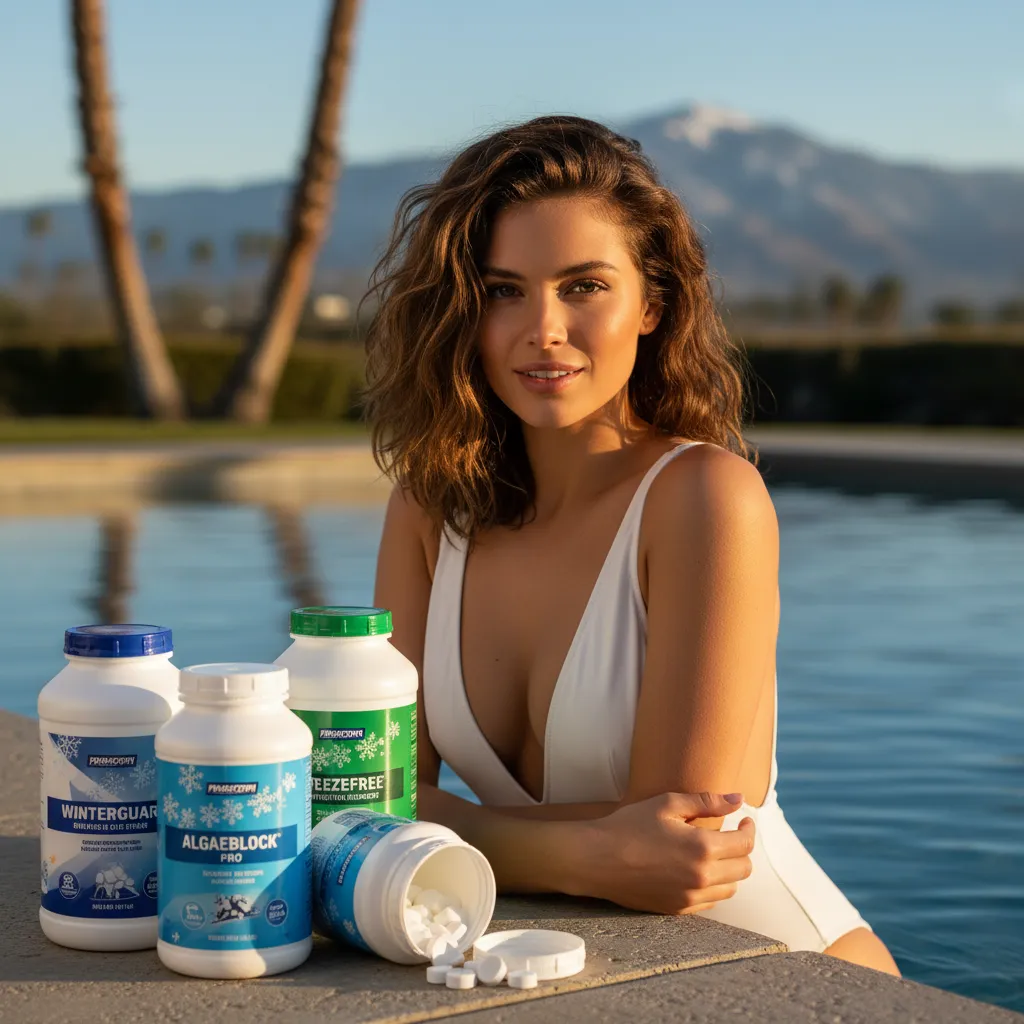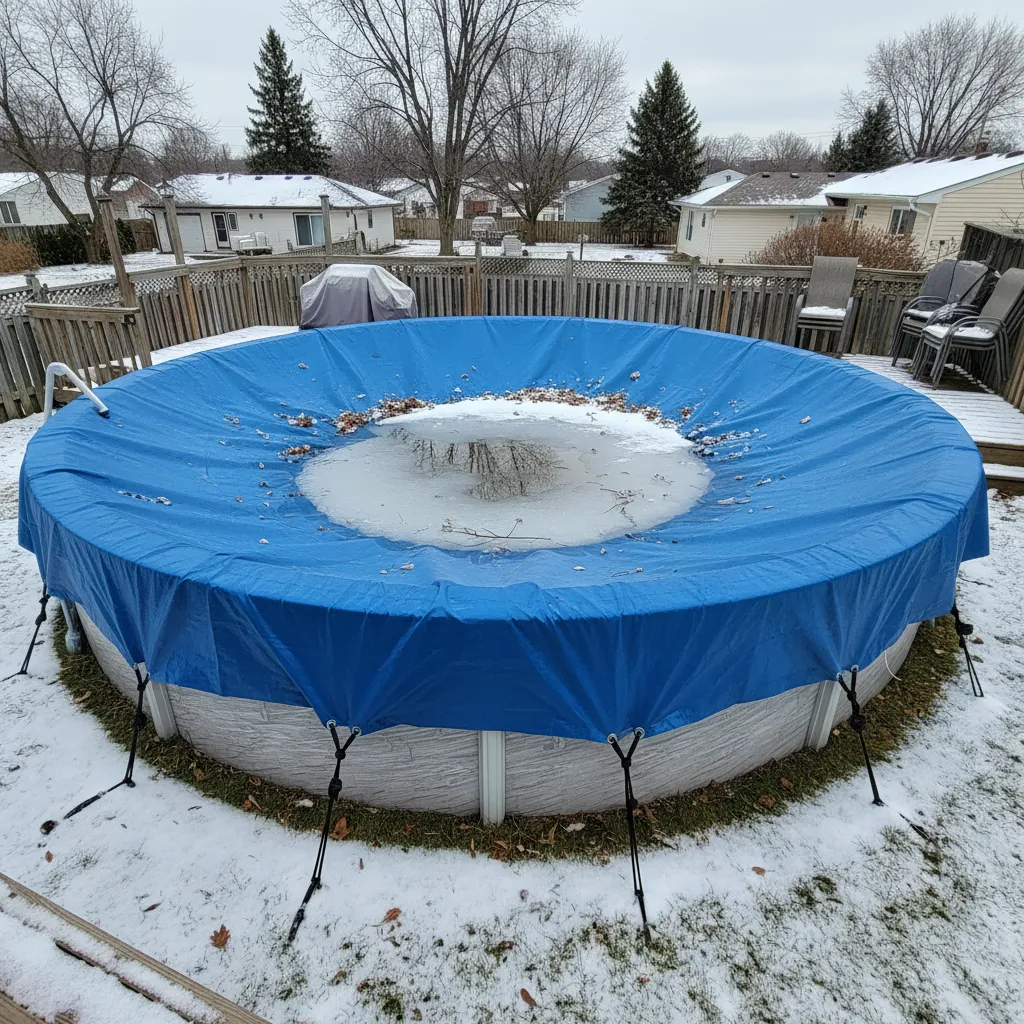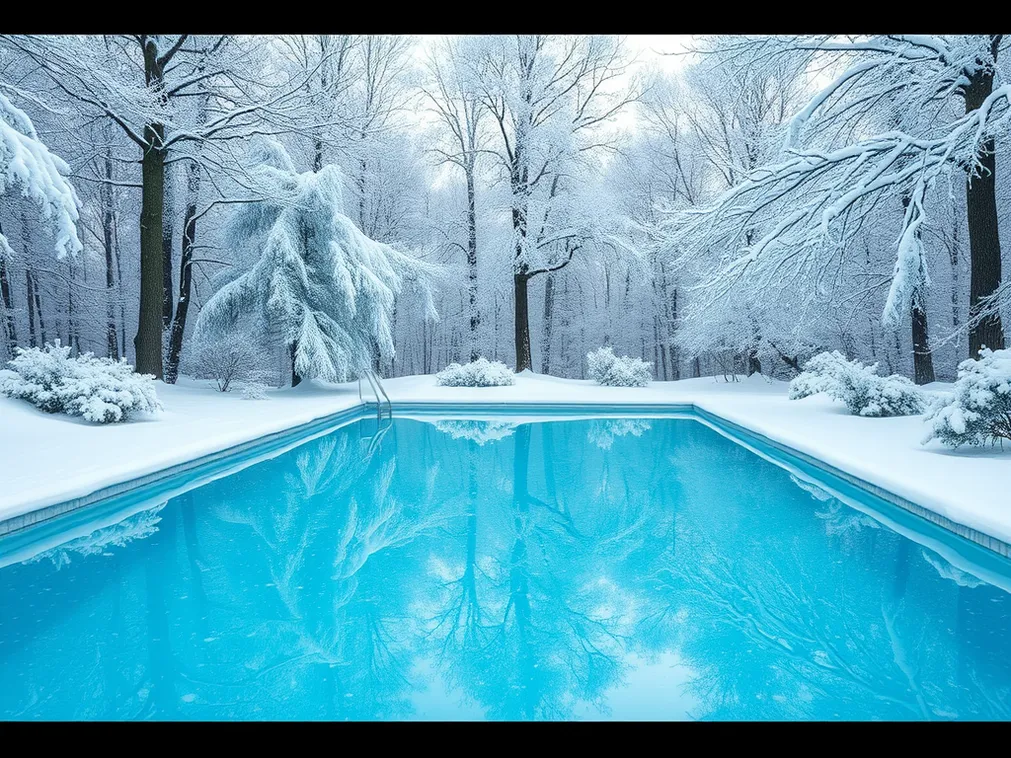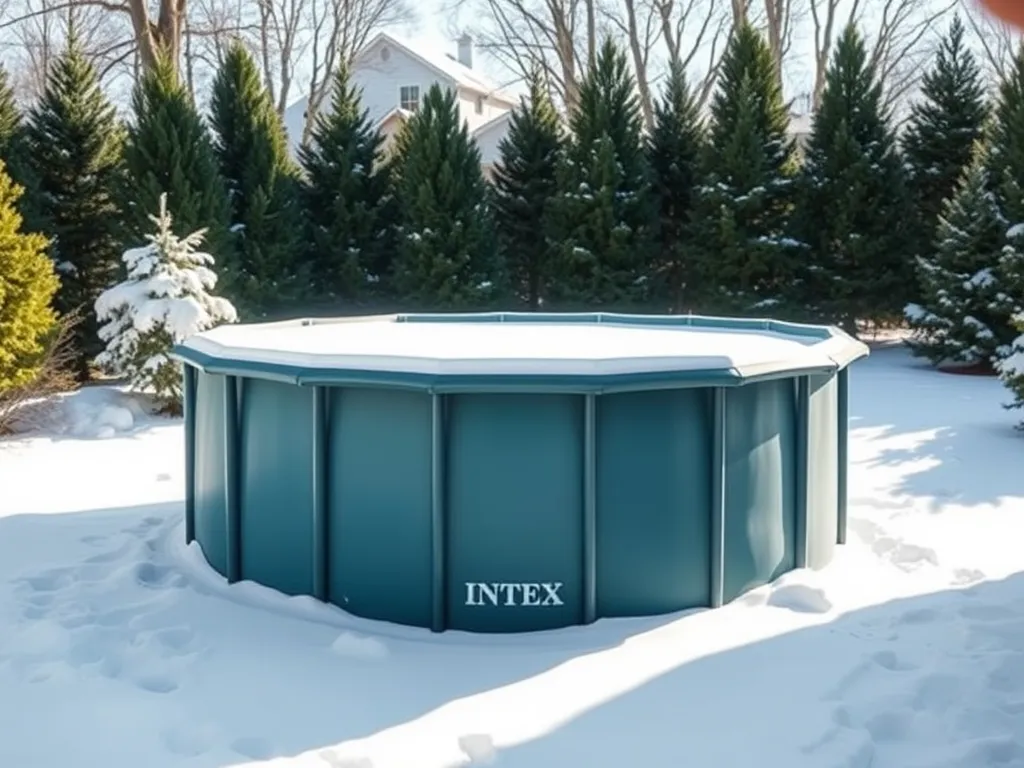Winter Pool Pump Run Time: Protect Your Pool and Save Energy
Published on: November 25, 2025 | Last Updated: November 17, 2025
Written By: Lila Fairholme
During winter, run your pool pump 4-6 hours daily to maintain water clarity and prevent freezing. Unlike summer’s 8-12 hour cycles, winter operation focuses on balancing circulation needs with energy savings. Keep the pump running to avoid ice damage and algae growth, but adjust runtime based on pool size, climate, and equipment efficiency. Variable-speed pumps can cut energy use by 30-50% at lower settings while still moving water effectively.
We’ll break down how freeze risks in Texas differ from Florida’s mild winters and why northern pools may need 24/7 operation during deep freezes. Learn how to use freeze protection modes (automated systems that activate pumps when temps drop below 34°F) and whether daytime or nighttime pumping works best for your region. Discover why improper winterization can lead to cracked pipes costing $500+ in repairs.
This guide covers climate-specific schedules, cost-saving pump settings, and maintenance checks like checking strainer baskets weekly. You’ll get exact run-time recommendations for vinyl vs concrete pools, tips for solar covers that reduce debris, and signs your pump cycle is too short – like cloudy water or uneven chemical distribution.
Determining the Optimal Winter Pool Pump Run Time
Cold weather changes pool maintenance rules. While summer requires 8-12 hours of daily circulation, winter demands a tailored approach to balance energy use and water quality. Let’s break down the variables that shape your pump schedule. One important aspect to consider during winter is the protection of your pool. A fold pool cover can help keep debris out and maintain water temperature.
Crucial Winterizing Products
"The all-in-one solution for a guaranteed clear spring opening."
All-in-One Closing Chemical Kit
Winter demand is high - check stock
"The 'set & forget' option. This is the easiest winterizing I've ever done."
Simple 3-in-1 Winterizing Balls
Winter demand is high - check stock
"Invest once to protect your liner and prevent a swamp in the spring."
Heavy-Duty Winter Pool Cover
Winter demand is high - check stock
How Long Does a Pool Pump Need to Run in Winter?
Most pools need 4-6 hours of daily circulation during colder months, a 50% reduction from summer run times. This baseline applies when water temperatures stay below 65°F and the pool sees minimal use. For saltwater pools or those with heavy debris exposure, extend run time to 6-8 hours to maintain proper chlorine generation and skimming action. Taking care of your pool pump in winter is important for its longevity. A well-functioning pump ensures your pool remains clean and clear even during the off-season.
Key Factors Affecting Winter Pump Duration
Three core elements dictate adjustments to standard run times:
- Climate severity: Areas with frequent freezes vs. mild winters
- Equipment type: Variable-speed pumps (1.5-3 hours) vs. single-speed models
- Water chemistry: Pools using liquid chlorine vs. stabilized tablets
Pool Size, Usage, and Filtration Efficiency
Turnover rate remains critical even in cold weather. A 20,000-gallon pool with a 40 GPM pump requires 8.3 hours to complete one full turnover. During winter, aim for 0.75-1 turnovers daily rather than the standard 1-1.5. This reduces run time to 6-8 hours for larger pools while maintaining water clarity. Keeping a full pool helps ensure the water circulates properly. A consistent level supports effective filtration and prevents issues like algae growth.
Filtration systems impact this calculation. Cartridge filters with 200 sq.ft. surface area may need longer run times than DE filters during leaf drop seasons. Variable-speed pumps set to 1,200 RPM can cut energy use by 80% compared to full-speed operation, making extended winter run times more economical.
Debris load directly affects pump workload. A pool under evergreen trees might need 2-4 extra hours weekly for skimming, while screened enclosures could maintain water quality with just 3 hours daily.
While these factors shape your baseline schedule, operational decisions depend on whether continuous winter operation makes sense for your specific setup. Next, we’ll explore scenarios where reducing or pausing pump use becomes viable.
Should You Run Your Pool Pump in Winter?
Winter pool pump operation requires balancing water quality protection with energy efficiency. While some homeowners switch off pumps entirely, others maintain partial schedules – but both approaches carry risks and rewards depending on your climate and pool setup. Maintaining good water quality is essential, especially if you have a hot tub. A shock treatment for your hot tub can help keep the water clean and safe during the colder months.
Pros and Cons Of Continuous Winter Operation
Running pumps nonstop prevents algae growth and maintains chemical distribution, critical for pools kept open year-round. Continuous circulation also reduces ice formation risks in skimmers and plumbing lines. Modern variable-speed pumps operating at 1,200-1,500 RPM consume less energy (40-60 watts) while moving 20-30 gallons per minute. But 24/7 operation in freezing climates can spike energy bills by 30-50% compared to optimized schedules. It’s important to consider how operating schedules affect overall energy consumption. By optimizing pump usage, pool owners can significantly lower their electricity costs.
Intermittent cycling proves more cost-effective for many pools. Running pumps 4-6 hours daily during daylight hours leverages passive solar heating while maintaining filtration. Always activate freeze protection modes on automation systems – these override schedules to cycle water when temperatures drop below 38°F, preventing pipe damage without constant operation. However, some pool owners prefer to run their filters continuously. Running a pool filter 24/7 helps maintain water clarity and ensures effective sanitation.
When to Stop Running Your Pump Completely
Full pump shutdowns work only for pools properly winterized with blown-out plumbing lines and antifreeze in traps. In regions with sustained sub-28°F temperatures, this prevents cracked equipment from frozen residual water. Safety covers blocking debris allow complete system dormancy.
Never stop pumps in areas with sporadic freezes unless you’ve chemically treated and sealed the system. Partially closed pools in transitional zones (like the Mid-Atlantic) benefit from weekly 2-3 hour cycles to circulate algaecides and clarifiers. Always consult freeze risk maps – pipes can burst in just 6 hours of sub-20°F exposure without flow.

Climate-specific Pool Pump Recommendations
Winter pool pump run time varies dramatically by region. What works in Florida’s subtropical winters could destroy equipment in Minnesota’s deep freeze. These location-based guidelines help tailor your approach. Keeping your pool clean is important, no matter the season. A clean green pool not only looks inviting but also ensures a healthier swimming environment.
Winter Pool Pump Run Time in Texas
Texas pools face mild winters with occasional hard freezes. Run pumps 4-6 daily hours split between morning and evening cycles. This maintains filtration while accommodating temperature swings. Upgrade to pumps with freeze guards activating at 36°F – crucial during Panhandle cold snaps. Energy costs average $20-$30/month at these durations with standard single-speed motors. Keeping the right water balance is important for pool health. Adding alkalinity to the pool helps stabilize pH levels, making it more comfortable for swimmers.
Winter Pool Pump Run Time in Florida
South Florida’s warm winters (average lows 55°F) require 6-8 hours of daily circulation to combat algae. Run variable-speed pumps at 1,800 RPM during daylight to leverage solar heat and chlorine activation. Reduce to 1,200 RPM overnight for energy savings. Tampa and Orlando pools should maintain 4-6 hour schedules with weekly shock treatments to offset sporadic 40°F nights.
Northern Climate Considerations
In snowbelt regions (Zone 5-6), winterize pools completely unless heated for year-round use. For open pools, run pumps continuously when temperatures hover near freezing – ice dams form in just 3 hours of stagnation at 28°F. Insulate exposed pipes with foam sleeves and keep water moving through all lines. Energy costs for 24/7 winter operation average $80-$120/month but prevent thousands in repair bills from burst components. Maintaining clear water is also essential during winterization. Deep pool clarity helps prevent algae growth and keeps the pool ready for use when spring arrives.
Next, let’s explore how to translate these climate needs into a tailored daily schedule that protects your pool without wasting energy.
Also See: Do You Need a Pool Pillow for Winter & Cover? Tips
Creating an Effective Winter Pump Schedule
Developing a tailored winter pump schedule requires balancing water quality needs with energy efficiency. While summer often demands 8-12 hours of daily circulation, colder temperatures reduce algae growth and chemical demand – but introduce new challenges.
Balancing Circulation Needs and Energy Costs
Most pools benefit from 4-6 hours of daily winter operation, cutting summer runtime by 50-60%. For variable-speed pumps, 1,450 RPM effectively maintains circulation while using 80% less energy than single-speed models. Key considerations include:
Proper pump run time is essential for keeping the pool water clean and clear. Adjusting the hours based on seasonal needs can save energy and maintain water quality.
– Pool size: 20,000-gallon pools need 1-2 more hours daily than 10,000-gallon equivalents – Filter type: Cartridge filters require 25% less runtime than sand filters – Water temperature: Below 60°F allows reducing chemical output by 30-40%
Night Vs Day Operation: Which is Better?
Night operation leverages off-peak electricity rates (saving $15-$30 monthly) but increases freeze risks below 32°F. Daytime running enhances skimming efficiency through sunlight-assisted debris breakdown. In freeze-prone areas, split schedules (2 hours morning/2 hours evening) optimize both priorities without continuous operation.
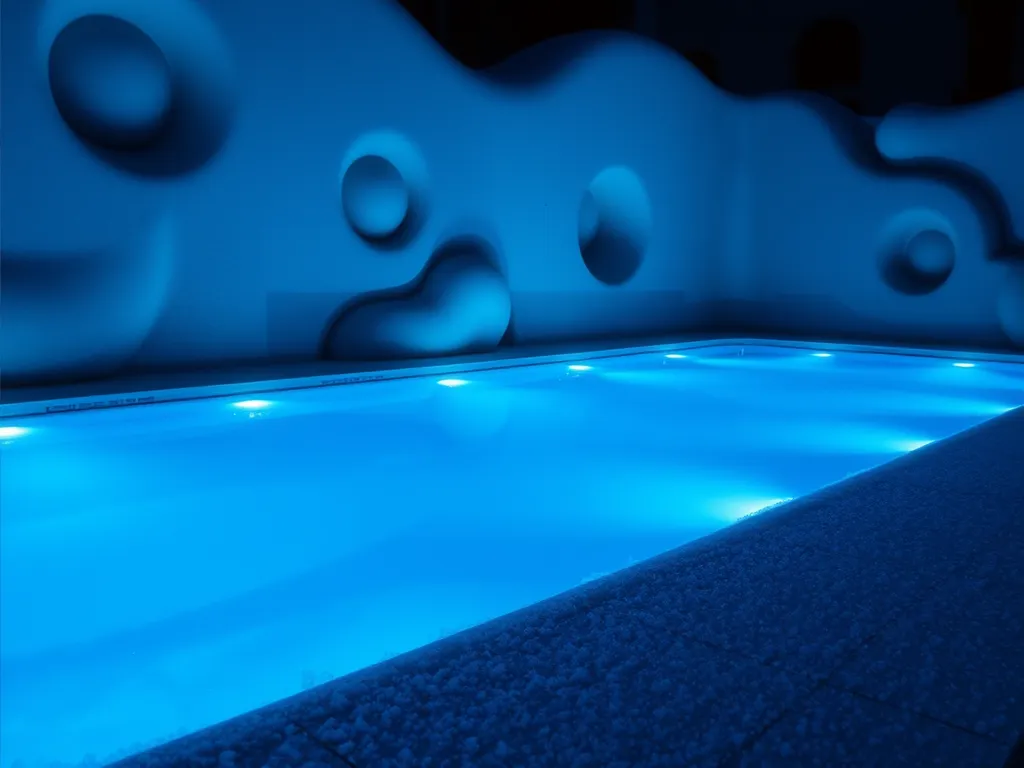
Preventing Freeze Damage in Winter
Proper pump management prevents costly freeze damage to equipment and plumbing. Pipes can burst within 6 hours of standing water at 28°F – repairs often exceeding $2,000.
Will My Pool Pump Freeze if Kept Running?
Running pumps prevent freezing only when water flows continuously. At 32°F, set pumps to operate 24/7 until temperatures rise. Modern systems with freeze guards automatically activate when sensors detect near-freezing conditions – typically cycling on every 15 minutes below 34°F.
Using Freeze Protection Features Effectively
Programmable freeze protection requires: – Air temperature sensors calibrated to ±2°F accuracy – Backup power sources for outages (solar/battery options maintain 12-48hr operation) – Flow verification switches to confirm water movement Disable these features if winterizing completely – residual water in inactive pumps still freezes.
Winter Pool Pump Maintenance &Amp; Winterization
Preparing pumps for cold months extends equipment lifespan and prevents spring surprises. Always complete these tasks before temperatures drop below 50°F consistently.
Should You Bring Your Pool Pump Inside?
Pumps shouldn’t be moved indoors unless temperatures regularly fall below 20°F. Instead: 1. Drain all water from pump housing and valves 2. Apply non-toxic RV antifreeze (propylene glycol) to seals 3. Cover with insulated blankets rated for -20°F Stored pumps need monthly impeller rotations to prevent bearing corrosion.
Understanding the “Winterize” Function
Digital control panels with winter modes reduce runtime to 1-2 hours daily while maintaining freeze monitoring. This setting: – Disables regular filtration cycles – Activates short “burster” cycles to prevent seal freezing – Maintains low-power sensor operation (uses 15-20W vs 1,500W normal draw) Always consult manufacturer guidelines – Hayward and Pentair systems require different winterization steps.
With these winter operation strategies in place, let’s examine how climate zones impact pump runtime requirements…

Cost-saving Strategies for Winter Pump Operation
Cutting utility bills without risking pool damage demands smart planning. With frosty conditions impacting plumbing and filtration needs varying by location, a mix of technology and timing can slash costs while maintaining vital circulation.
Optimizing Run Time Without Sacrificing Protection
Variable-speed pumps stand out for cold-month savings. Operating at 1,200-1,500 RPM during chill cycles, these units cut power consumption by up to 70% compared to single-speed models. Pair this with a thermal blanket – reducing liquid loss by 50% – to maintain stability without constant pumping.
Off-peak timing matters. Many utility firms offer lower rates from 8 PM to 6 AM. Shifting four hours of daily circulation to this window could trim $15-$30 monthly from bills. For pools in zones with sporadic frost, activating freeze protection mode (triggering pump activity only below 38°F) avoids 24/7 operation.
| Strategy | Action | Impact |
|---|---|---|
| RPM Adjustment | Set variable-speed pumps to 1,200 RPM | Saves $18-$25/month |
| Thermal Blanketing | Install 12-mil solar cover | Reduces chemical use by 35% |
| Smart Scheduling | Align 60% of pump hours with off-peak times | Cuts costs by 22% |
Pools in mild climates (avg temps above 45°F) can safely drop to 4-6 hours daily, while those in sub-freezing zones might need 8-10 hours split into two cycles. Always confirm flow by checking skimmer action – a strong vortex signals proper circulation. Efficient water flow is essential for maintaining pool safety and cleanliness. This is especially important in long drain pools, where effective circulation helps to prevent issues with water quality and ensures a more enjoyable swimming experience.
Up next: Tactics for guarding plumbing during cold snaps while avoiding costly repairs.
FAQs: Winter Pool Pump Operation
How Does a Safety Cover Impact Winter Pump Run Time Requirements?
Safety covers reduce debris and evaporation, allowing pump run times to be cut by 30-50%. Solid covers block sunlight that fuels algae growth, enabling 3-4 hours of daily circulation vs. 6-8 hours for uncovered pools. However, mesh covers require slightly longer cycles (4-5 hours) due to partial debris entry. Always maintain circulation to prevent stagnant water under covers, which can breed bacteria.
Are Variable-speed Pumps Safe to Run at Low Speeds in Freezing Conditions?
Variable-speed pumps should not operate below 1,800 RPM when temperatures approach freezing. While efficient at 1,200 RPM for standard winter use, lower speeds may not generate sufficient flow to prevent ice formation in pipes. During cold snaps below 34°F, increase to 2,450 RPM or use dedicated freeze-protection modes that automatically adjust speed based on sensor data.
Do Shorter Daylight Hours Impact Winter Pump Scheduling Efficiency?
Reduced daylight affects solar-dependent pools but not standard operations. For systems without heaters, schedule 70% of pump hours during peak sunlight (10 AM – 3 PM) to leverage natural warmth that improves chemical distribution. This timing also enhances skimmer effectiveness as daytime winds increase surface debris movement. Night operation remains viable with freeze guards but increases energy costs by 15-25% in most regions.
Closing Thoughts
Finding the right winter pool pump runtime balances protection and efficiency. Your climate, pool size, and equipment dictate whether you need 4-6 hours daily or continuous circulation during freezes. Freeze protection modes and split run cycles can cut energy costs by 30-50% while preventing damage.
For precise calculations tailored to your pool, try My Pool Calculator. Our tools factor in local weather patterns, pump horsepower, and plumbing specs to generate optimized winter schedules. Proper winterization preserves water quality and extends equipment lifespan—small adjustments now prevent costly spring repairs.
Monitor temperatures closely, prioritize circulation during cold snaps, and don’t hesitate to winterize completely if temperatures drop below freezing for extended periods. Your pump is the heart of your pool system—keep it running smartly all season.
Useful References for You:
- National Swimming Pool Foundation (NSPF). (2022). Pool & Spa Operator Handbook (4th ed.). Colorado Springs, CO: NSPF.
- Pool Service: How Long Should You Run Your Pool Pump During Winter? | Alan Jackson Pools
- Pool pump time and speed during winter | Trouble Free Pool
- When Should I Run My Pool Pump? The Ultimate Guide | 1st Direct Pools
- How long Should I Run My Pool Pump in Winter?

